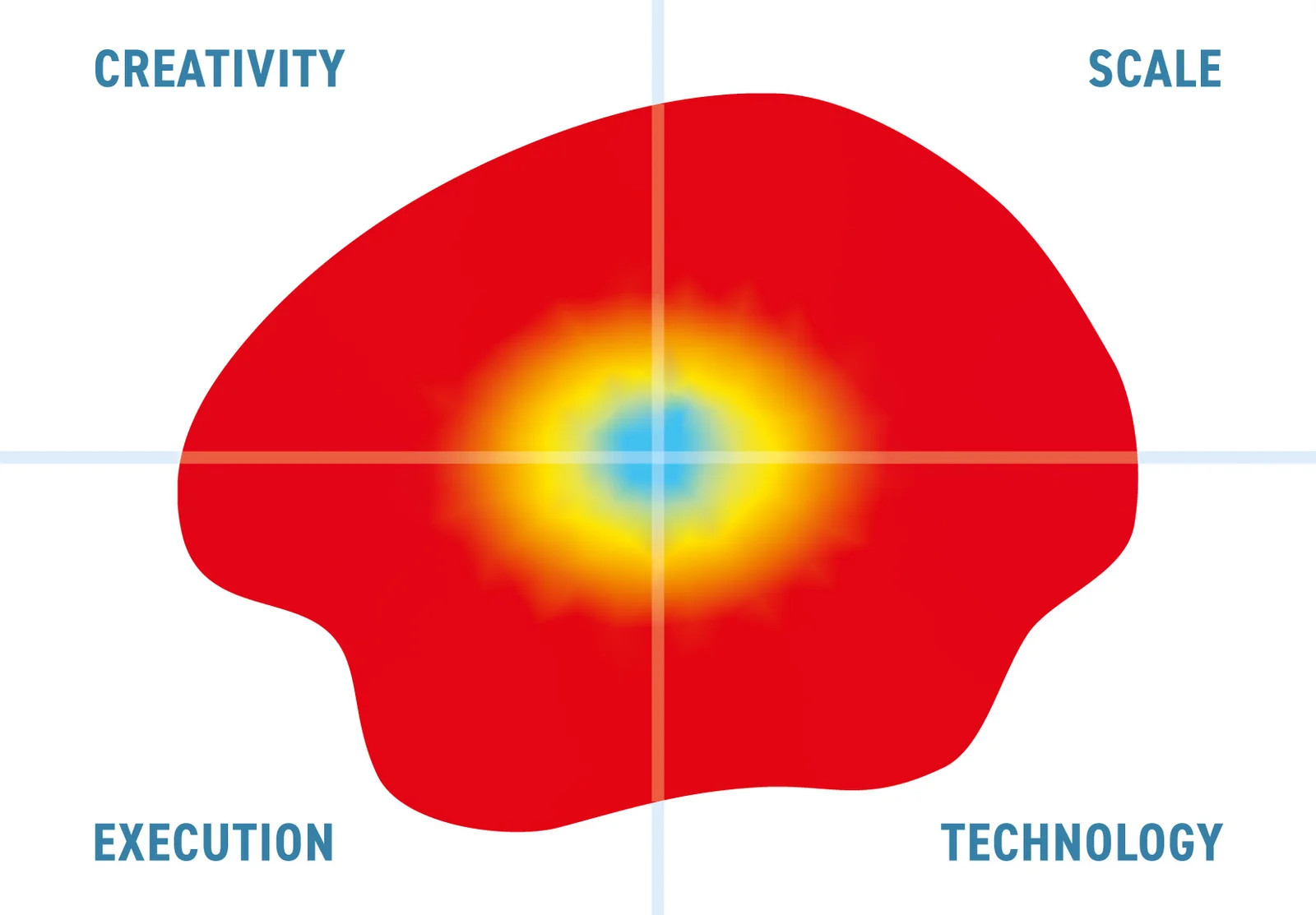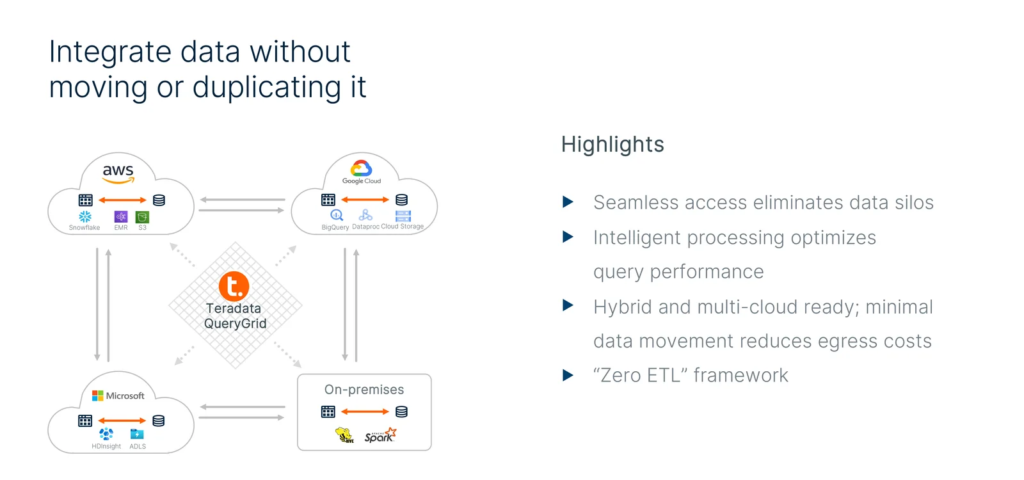The Fabric of Teradata
Update solution on April 2, 2024

A data fabric architecture, at heart, is about providing a unified view of a corporation’s data assets without having to necessarily move copies of data from source systems into a dedicated query environment, such as a data warehouse or a data lake. Teradata clearly has a long history in the data warehouse world, but has added several capabilities to allow it to operate within the data fabric architecture. Teradata’s QueryGrid feature provides a window into multiple data sources, whether they be on-premises or in a private or public clouds. It provides data virtualisation, showing a unified view of data across multiple sources.

Fig 01 – Overview of Teradata VantageCloud
Crucially, QueryGrid provides for distributed query processing, a vital element of a data fabric and one which is conveniently overlooked by many vendors claiming to operate in the data fabric space. A query can be constructed by accessing data from Teradata Vantage itself and Hadoop files, object stores and other data sources, whether on-premises or cloud. There is an optimiser and management system that prioritises and balances workloads and provisions resources like processors and memory to efficiently execute complex queries. Access controls and data policies can be applied, including data masking and encryption where needed. Teradata Vantage executes a query in the most efficient manner, pushing down query processing close to the data gravity versus moving the entire data sets. It has connectors to Hive, Starburst, Oracle, Spark and Google Big Query amongst others. There is also a natural language interface, currently in private preview, named ask.ai, enabling users to pose queries in plain English, which then generates the required access statements in the underlying systems, such as SQL statements for relational databases.
Customer Quotes
“With Vantage, enterprise-scale companies like Target can eliminate silos and cost-effectively query all their data, all the time, regardless of where the data resides.”
Samantha McIntyre, General Manager of Technology, Target
“To be focused on a consumer, all the behaviors and actions must be ingested and then integrated to use it in an analytical way, Teradata VantageCloud on Google Cloud is the platform that helps us to integrate all this information together and to build a customer view.”
Ignacio Charfole, Head of Big Data Architecture & Governance, Telefonica
“Teradata’s products are superior to the competition because of their strength on the front-end as an access platform and their user experience. You don’t have to be a data expert to access and use data.”
Kazutoshi Ono, CTO/CIO, Credit Saison group
Teradata’s QueryGrid feature allows a virtual window into data, wherever it may be sourced, and presents this data to end users. Semantic mapping enables data to be presented in a user-friendly format, eliminating the need for users to be familiar with the underlying physical structures. This layer goes as far as handling deduplication of data and consolidation of data sources where appropriate.

Fig 02 – Integrate data without moving or duplicating it
Teradata has a partnership with Microsoft, and this includes working with the Microsoft Data Fabric product set. Teradata’s AI Unlimited, currently in private preview, will work with the OneLake logical data lake within the Microsoft Fabric environment. However, Teradata’s Data Fabric offering can expand the reach of Microsoft Fabric to non-Fabric data sources; it is offered as an option alongside, aimed at customers who have already committed to the Microsoft product.
Teradata Vantage allows customers to construct an analytics environment without necessarily copying data from sources into a separate data warehouse: this is the goal of a data fabric. In practice, this approach has some limitations in specific instances where there are performance SLAs, where it could be better if the data is localized and tuned in the processing engine of choice. In reality, some data will be more naturally materialised and re-used in queries. However, Teradata Vantage makes this approach transparent to the end user and allows each customer to be as virtual or otherwise as they wish to be in the way they set things up.
The recent interest in data fabric has caused a lot of vendors to frantically re-label what they had before as data fabric-friendly. However, some things are much harder than others to build. Producing a knowledge graph from a catalog is one thing, but building a proper distributed query engine with an effective optimiser is a much more complex task. Teradata is fortunate in that they have long had the foundations for this, based on their heritage in high-end data warehousing.
They have a well-proven semantic layer, a catalog, a knowledge graph, good source data integration and above all a proper distributed query optimiser, so the key elements of this architecture are all in place. Many data fabric solutions require stitching together several elements from different vendors or open-source solutions. Teradata is about as close as you will find to a complete offering in the data fabric world.
The bottom line
Teradata has built on its long heritage in highly scalable data warehousing and have extended this deftly into the data fabric world. Moreover, they have many customers actually using this approach in practice. For a proven data fabric solution versus something shown via PowerPoint or a canned demo, Teradata should be high on your list to consider.
Related Company
Connect with Us
Ready to Get Started
Learn how Bloor Research can support your organization’s journey toward a smarter, more secure future."
Connect with us Join Our Community
